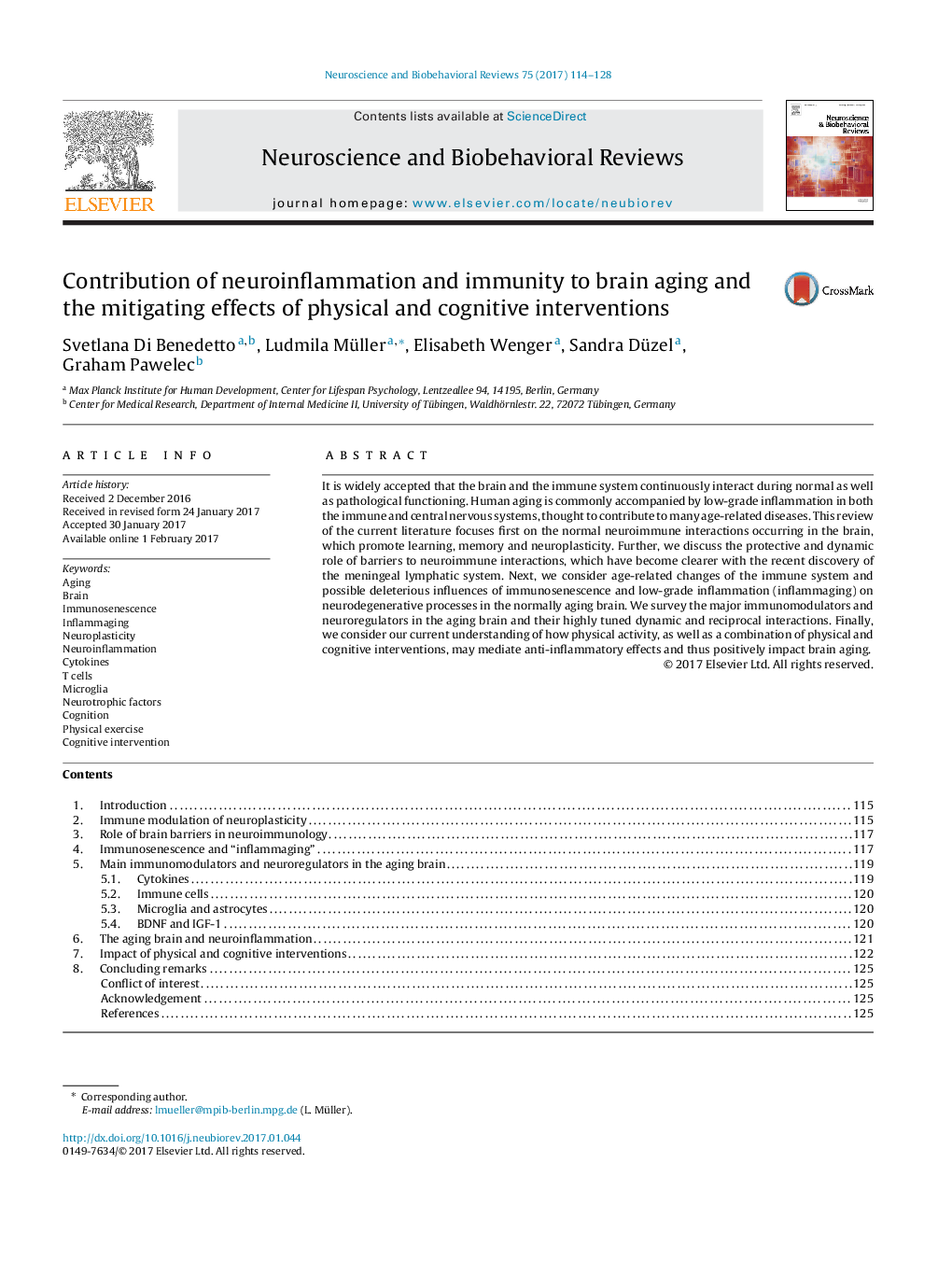| Article ID | Journal | Published Year | Pages | File Type |
|---|---|---|---|---|
| 5043503 | Neuroscience & Biobehavioral Reviews | 2017 | 15 Pages |
â¢Central nervous and immune systems interact constantly through multiple pathways.â¢Peripheral immunosenescence and “inflammaging” may contribute to neuroinflammation.â¢Increase in glial activation has detrimental effects on neuroprotective function.â¢Neuroinflammation leads to deficiency in neurotrophins, diminishing neuroplasticity.â¢Behavioral interventions mitigate neuroinflammation and maintain neuroplasticity.
It is widely accepted that the brain and the immune system continuously interact during normal as well as pathological functioning. Human aging is commonly accompanied by low-grade inflammation in both the immune and central nervous systems, thought to contribute to many age-related diseases. This review of the current literature focuses first on the normal neuroimmune interactions occurring in the brain, which promote learning, memory and neuroplasticity. Further, we discuss the protective and dynamic role of barriers to neuroimmune interactions, which have become clearer with the recent discovery of the meningeal lymphatic system. Next, we consider age-related changes of the immune system and possible deleterious influences of immunosenescence and low-grade inflammation (inflammaging) on neurodegenerative processes in the normally aging brain. We survey the major immunomodulators and neuroregulators in the aging brain and their highly tuned dynamic and reciprocal interactions. Finally, we consider our current understanding of how physical activity, as well as a combination of physical and cognitive interventions, may mediate anti-inflammatory effects and thus positively impact brain aging.
Graphical abstractDownload high-res image (200KB)Download full-size image
